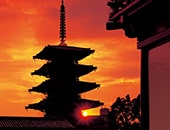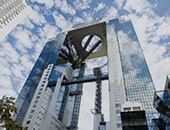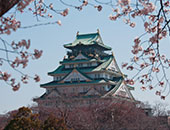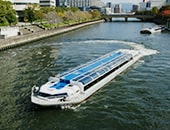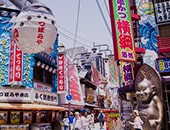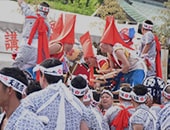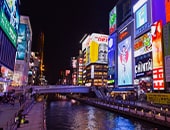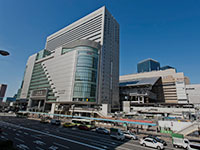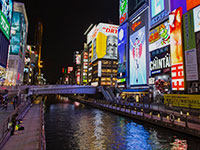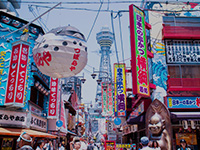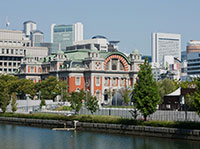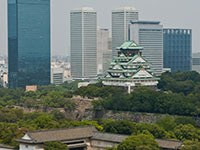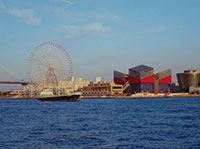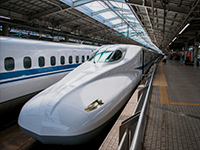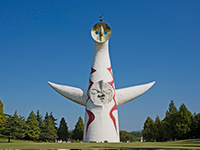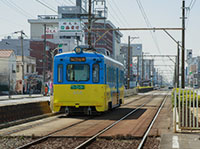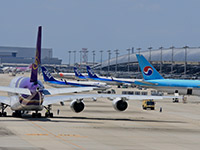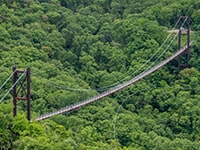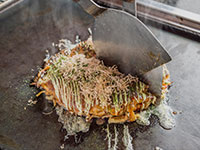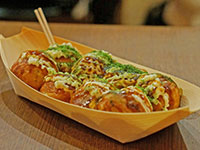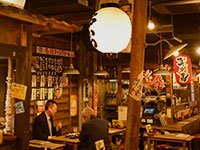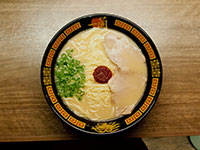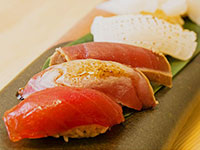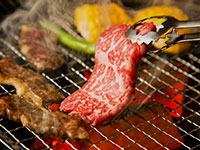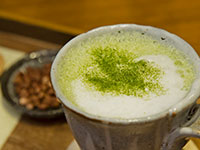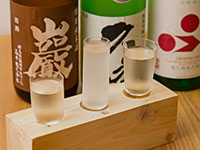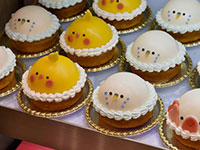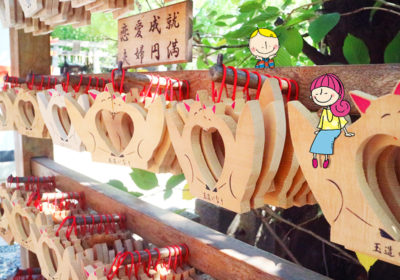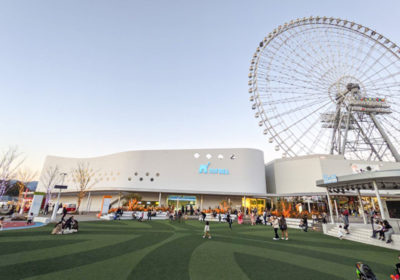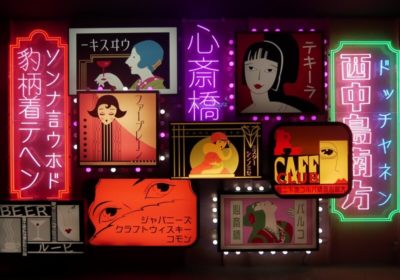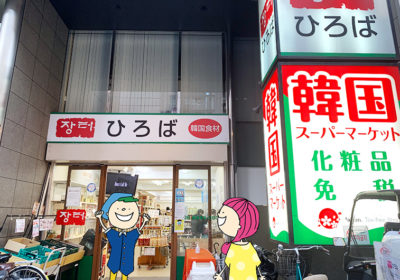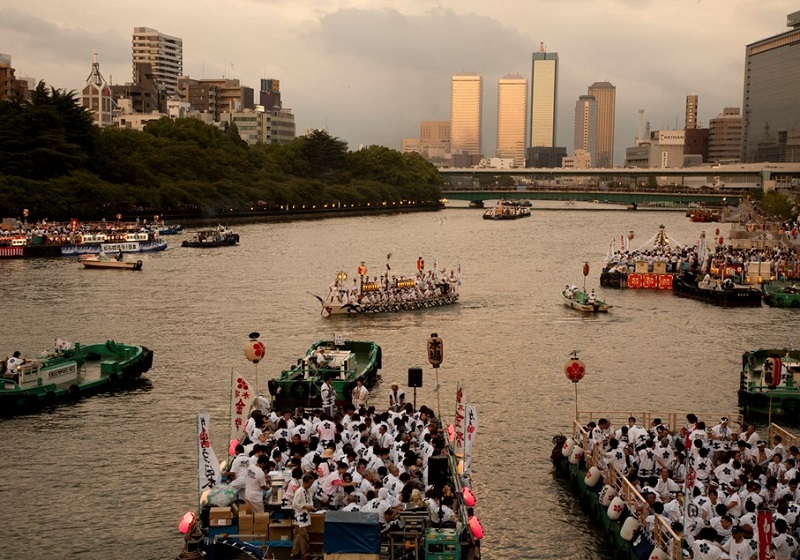

Supporter
Everything you need to know about Tenjin Matsuri Festival
Osaka has its share of festivals, and they’re all fun, but Tenjin Matsuri is the summer festival in Osaka. It’s got everything—history, boats, parades, fireworks, and absolutely amazing festival food!
(Contents)
■ The basics
Tenjin Matsuri is one of Japan’s biggest summer festivals. It’s held annually at Osaka Tenmangū Shrine and has a history stretching back over the last thousand years. It’s hugely popular and draws upwards of 1 million spectators every year. Regardless of the day of week, Tenjin Matsuri is held on July 24 & 25. When one or both of these days fall on a weekend there will be many more festival-goers, but even on a weekday, expect lots of people and lots of excitement.
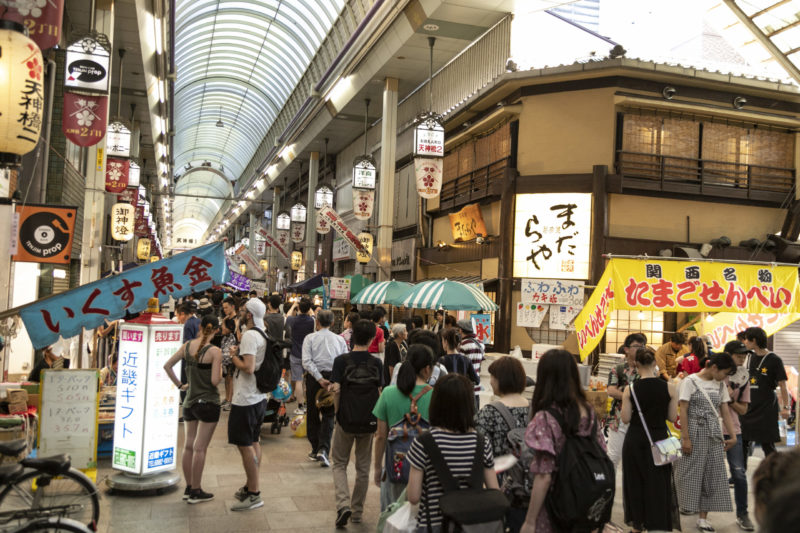
Like Gion Matsuri in Kyoto, Tenjin Matsuri also has its roots in Shinto, which traditionally sees summer festivals as a way to ward off bad luck, plagues, and natural disasters. These festivals are held in honor of Shinto deities in hopes of appeasing any vengeful spirits while providing diversion and entertainment.

Tenjin Matsuri is held on the grounds of Osaka Tenmangū Shrine, the surrounding streets and the nearby Ōkawa (Ō River). The nearest stations* are:
Minamimorimachi Station (Osaka Metro)
Ōsaka-Tenmangū Station (JR Tozai Line)
Tenmabashi Station (Osaka Metro and Keihan Railway)
*As the land and boat processions travel further away from the shrine, other stations may be closer to portions of the procession route.
■ A little background
To understand the roots of this festival, you have to take a look at the shrine where it’s held, Osaka Tenmangū Shrine.
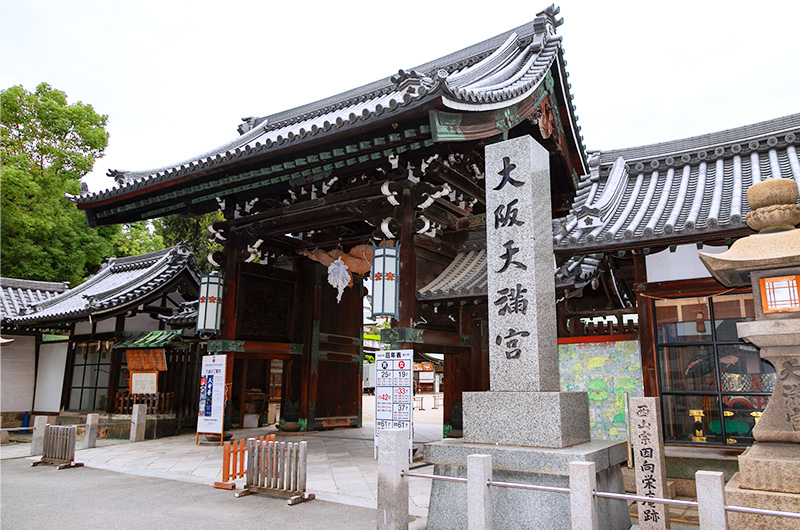
The shrine was built for Tenjin, the deity of scholarship and learning. In life he was Sugawara no Michizane (846–903), a political figure renowned for his knowledge of Chinese literature and poetry. Michizane once had a close relationship with the emperor, but political dealings led him to be banished to the faraway island of Kyushu, where he eventually fell ill and died.
After Michizane’s death when misfortunes befell the imperial capital of Kyōto, people attributed them to Michizane’s angry spirit. A shrine was built to appease him and lift the curse. There are many Tenjin shrines throughout Japan and the Osaka shrine is one of the largest. Students from all over Kansai visit Osaka Tenmangū to pray for good luck in their academics, especially during exam season.
Two more fun facts:
- There’s a natural spring on the shrine grounds. The water is from 70 meters underground and is utterly refreshing. There’s a small shrine near the main entrance where you can taste the water, but it’s only open 3 days a month—the 1st, 10th, & 25th.
- Tenjin is affiliated with oxen so you’ll often find ox statues on Tenjin shrine grounds. This one is supposed to improve your health wherever you stroke it.
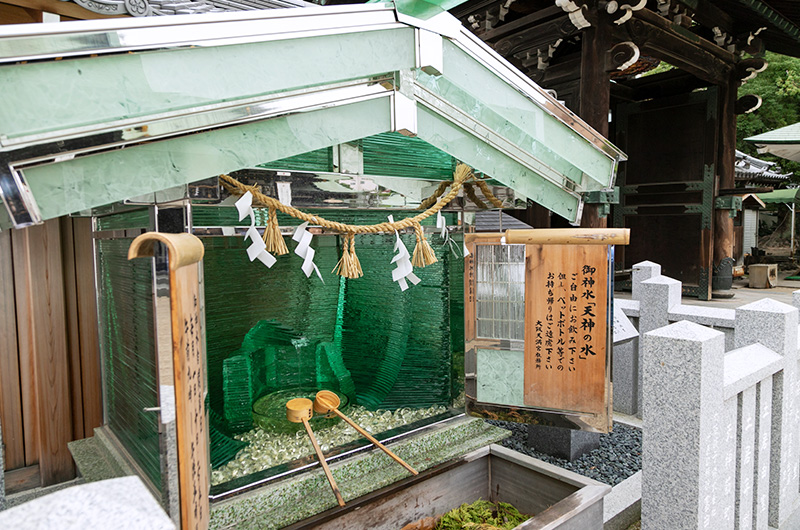
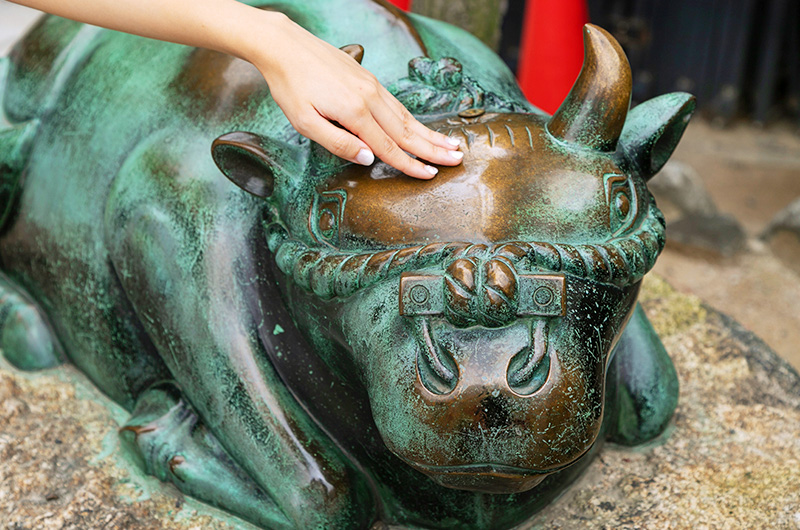
■ Pre-festival events
July 23
Gal Mikoshi, an event where a group of about 80 women hoist portable shrines on their shoulders and parade them through the streets near Osaka Tenmangū Shrine, takes place on July 23. The portable shrines are heavy, weighing about 200kg and the women are dressed in bright, colorful, festival costume. There is lots of joyful shouting and cheering. The event has a real get-this-party-started type of vibe and it’s tons of fun!
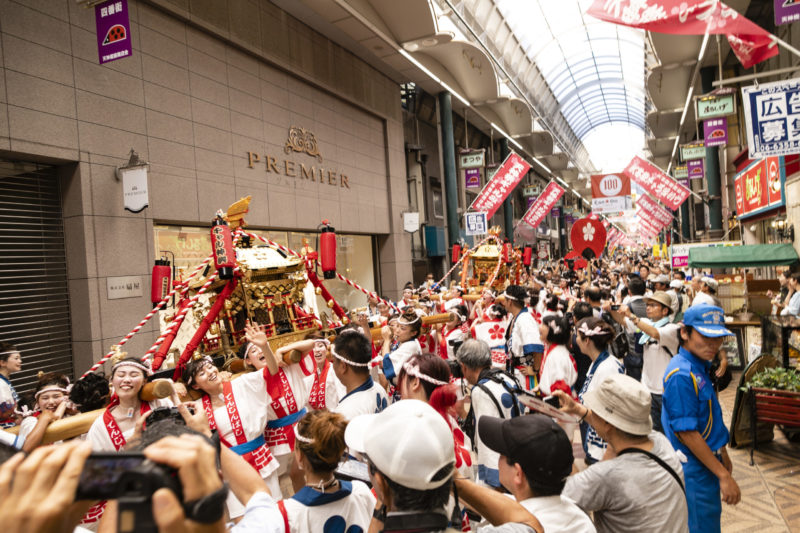
Compared to the long history of the festival, Gal Mikoshi is relatively new. When it was last held in 2019, the event was in its 39th year. The tradition started in 1981 and has been a fun way to kick off the festival events ever since.
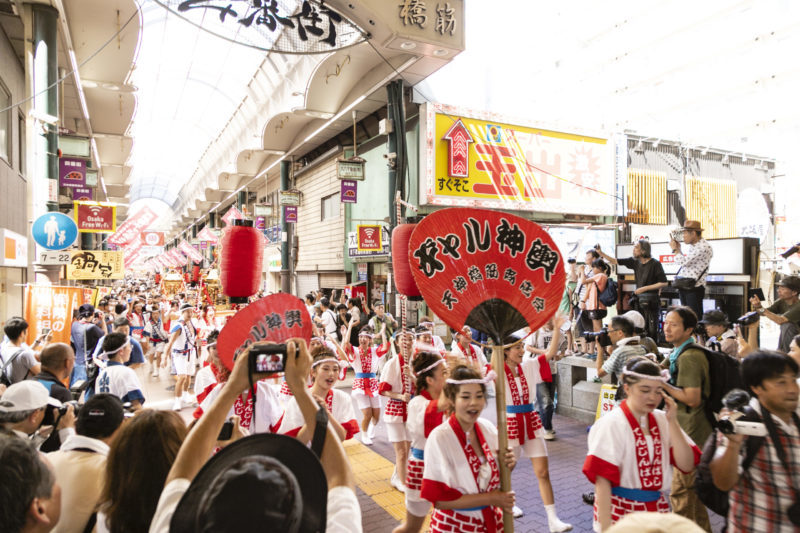
■ Tenjin Festival, day 1: rituals, music, & festival stalls
July 24
Opening rituals take place early in the morning. A parade of about 200 people leave Tenmangū Shrine and head towards the river where a priest continues the rituals for Michizane’s spirit. A small boat with the priest and a young boy onboard is paddled out into the river and the boy sets a wooden spear (hoko) adrift on Dojima River. The ceremony includes prayers for safety and in hopes of warding off illness and misfortune.

During the day flutes and drums can be heard throughout the neighborhood as the shishimai (lion dance) makes its rounds of local businesses. The lion dancers are accompanied by women garbed in sleek festival clothing, wearing bells and brightly colored sashes on their waists. They move in time with the music and spin swirly umbrellas as they move through the streets. Festival stalls will already be set up in Tenjinbashisuji Shopping Arcade and other places near the shrine.
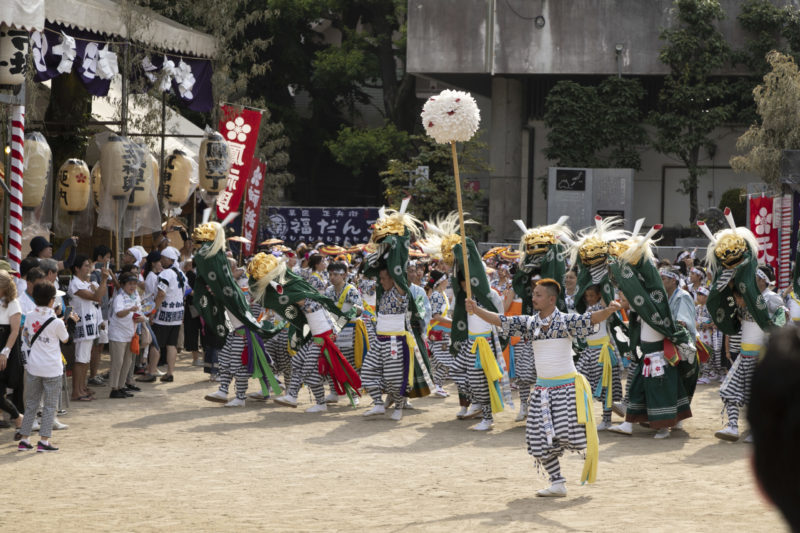
It is considered good luck to put your head in the lion’s mouth. You might witness a scene like this during the day.
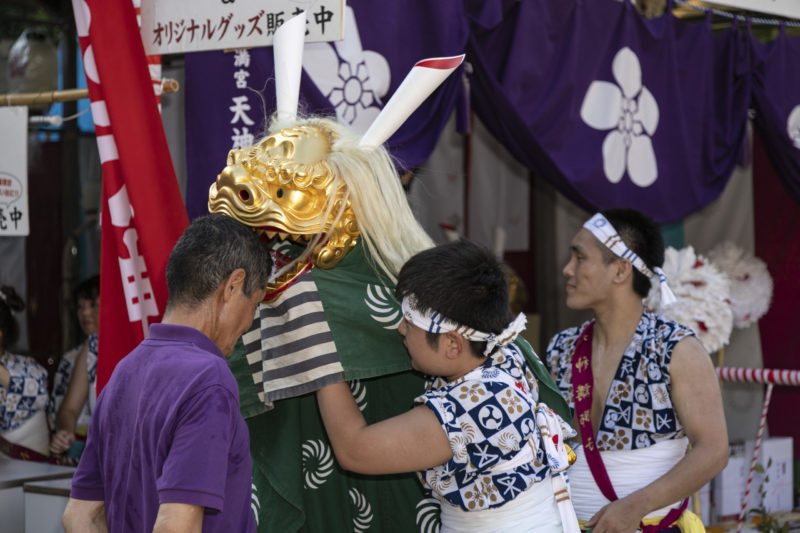
The shrine remains lively with taiko drumming and a fun festival atmosphere well into the evening. This is also a good chance to see the unique dragon dance (ryu-odori) which depicts a dragon climbing up to heaven. Dancers are perched above a stage and dance to the rhythmic sounds of taiko and high-pitched gongs.
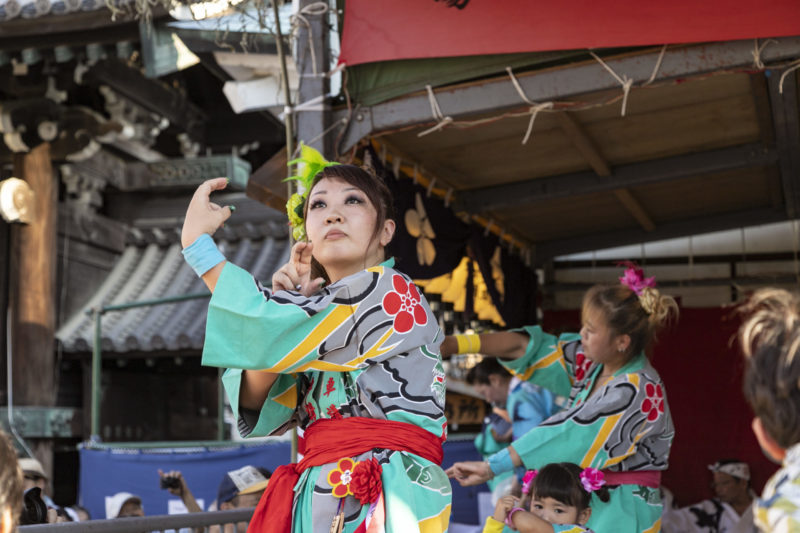
Festival-goers can see this dance performed on both days of the festival. There’s something about the repetitive rhythms and symbolic dance movements that feels almost hypnotizing.
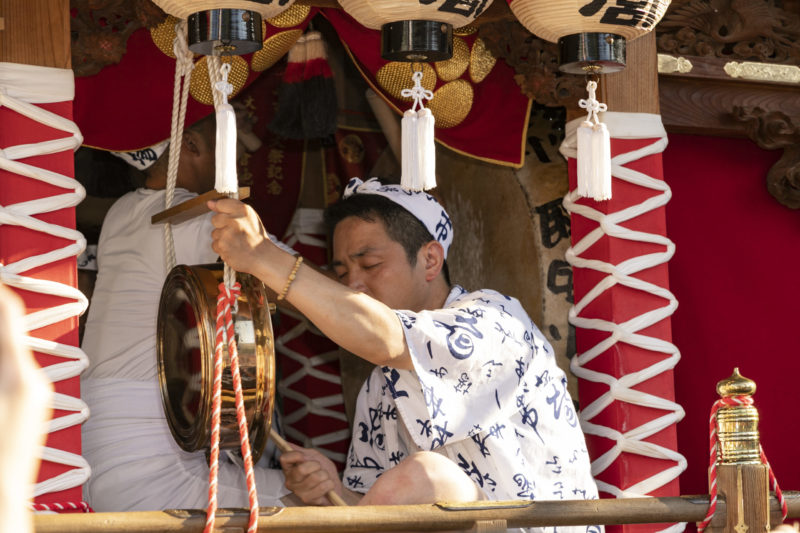
■ Tenjin Festival, day 2: parades, boats, & fireworks
July 25
The 2nd day is the main day of the festival when the spirit of Tenjin/Michizane is led through town in a portable shrine, first on land and then on the river.
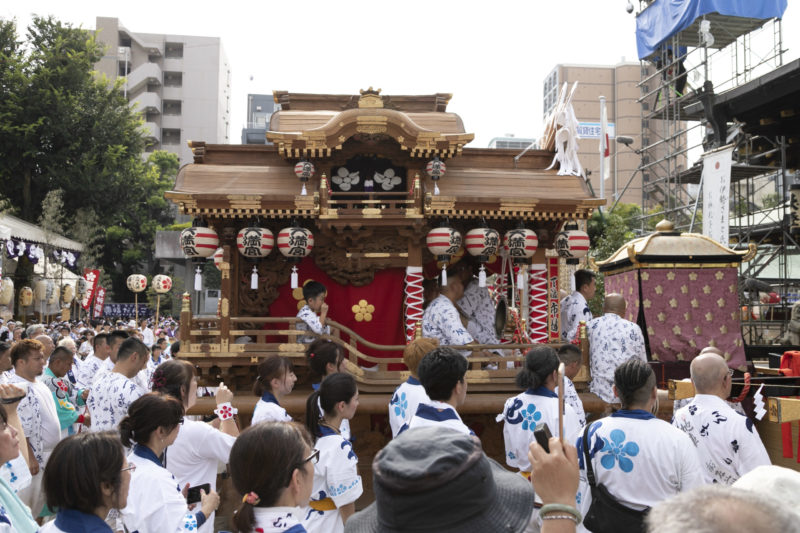
The land procession starts around 3:30 in the afternoon and lasts for approximately 2.5 hours. It winds for about 3 km out from the shrine, making its way down past Osaka City Central Public Hall, across Naniwa Bridge and Tenjinbashi, before arriving at the riverside.

In the procession, you’ll see the giant taiko drum and about 8 drummers in tall red hats mounted on a platform that is carried by festival volunteers. Next you’ll see Sarutahiko, a long-nosed kami who appears on horseback. There are also lion dancers, umbrella dancers, musicians, and ornately carved danjiri floats in the procession.
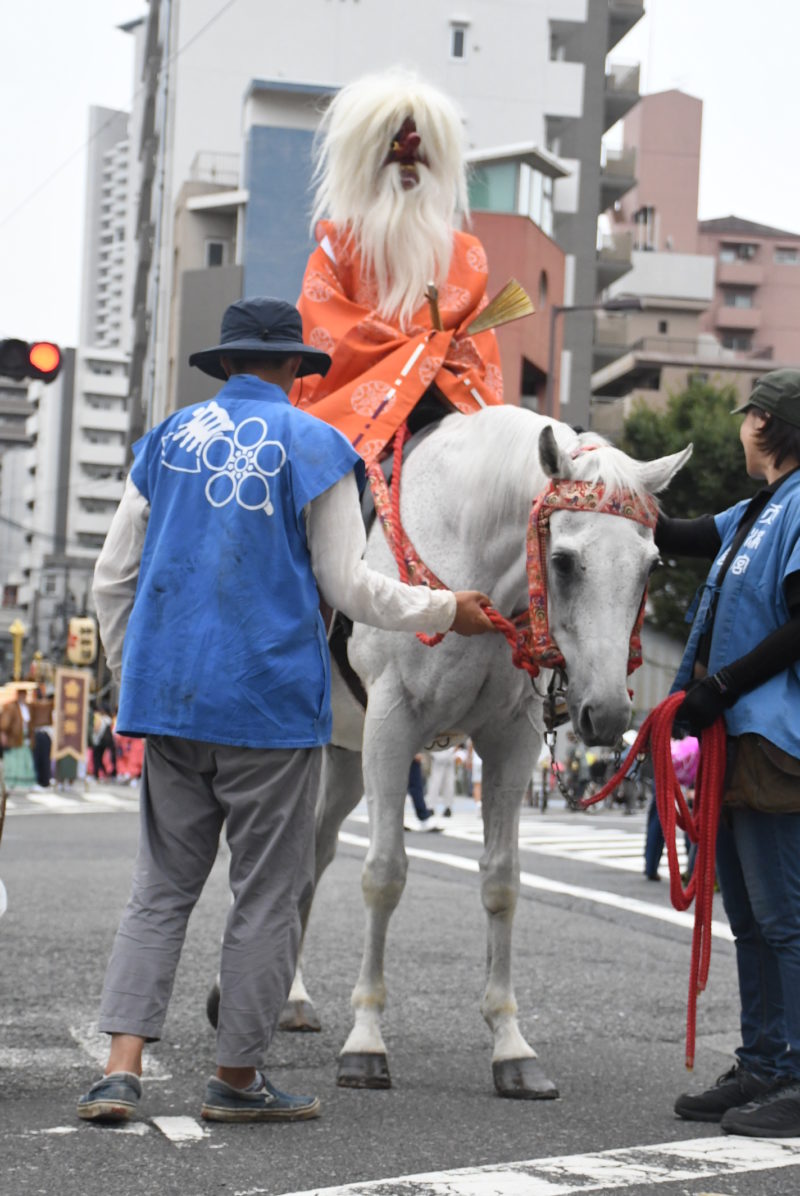
At the end of the procession you’ll see children leading a sacred ox and the final mikoshi (portable shrine) which carries Tenjin’s spirit. After the mikoshi reaches the river, it is loaded onto a boat and the boat procession begins. When the boat holding the kami’s spirit passes, music stops and onlookers are asked not to look down on the boat from overhead to show respect.

All in all, there are about 100 boats parading up and down the river. Some are stage boats that feature Noh and Bunraku performances. There are also a handful of Dondoko Boats, which are propelled by young men rowing to the rythmic sound of taiko drums and high-pitched gongs (kane).
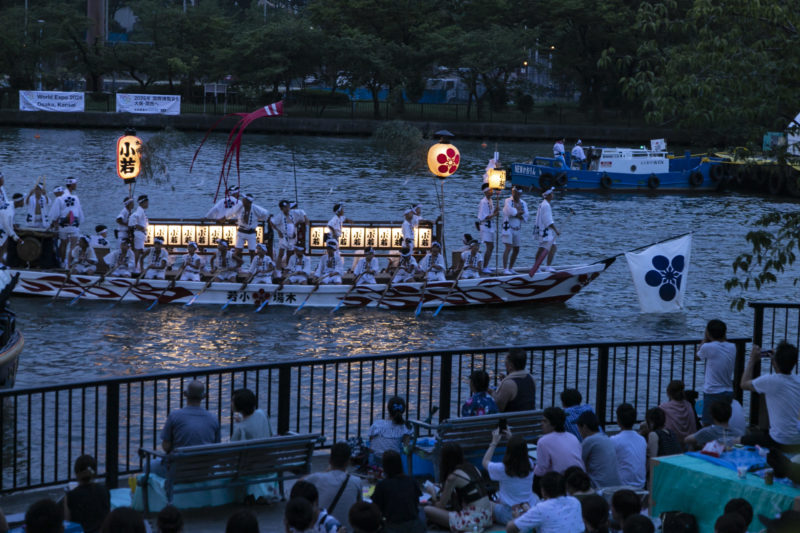
Once the mikoshi has completed its course on the river and is returned to land and eventually the shrine, the fireworks start. The show lasts from about 7:30–9:00 pm and it dazzles! There’s something so amazing about the Tenjin Matsuri fireworks that shoot high above the city. Each year it seems like there is something new and the finale is always spectacular.
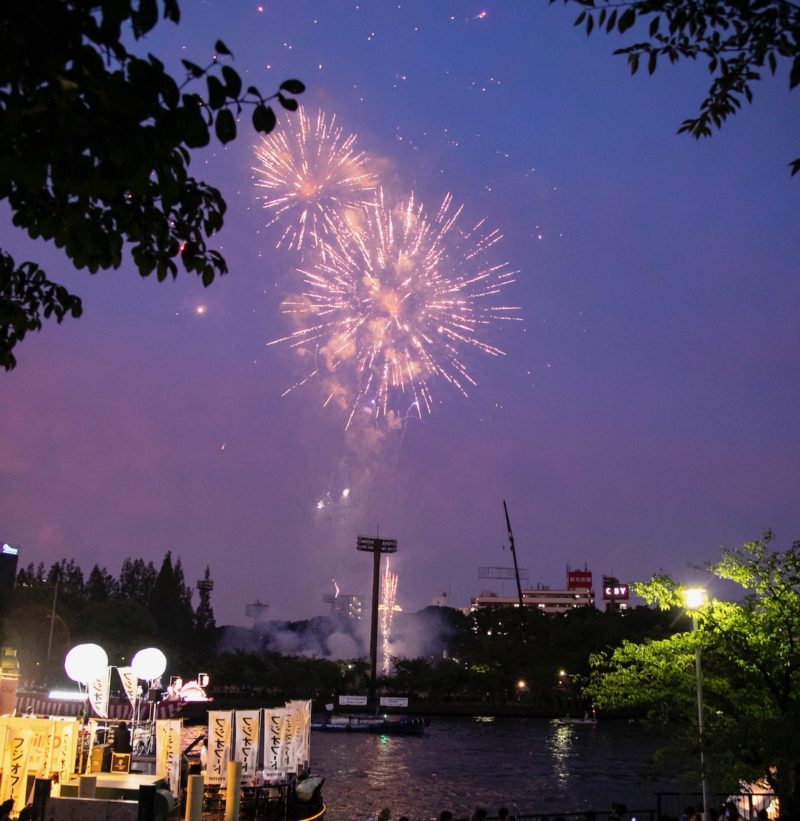
■ Tips for festival-goers
The festival is held during the hottest season of the year, so be sure to stay hydrated and stay out of the sun as much as possible if you are attending the daytime festivities.
While you will be able to enter the shrine grounds and view parts of the land procession, if you’re in the right place, it is harder to get a look at the boats and fireworks. Tons of people go early to snap up the good picnic areas along the Ō River so if you want to be able to see the boats, either camp out early or purchase a reserved seat ahead of time.
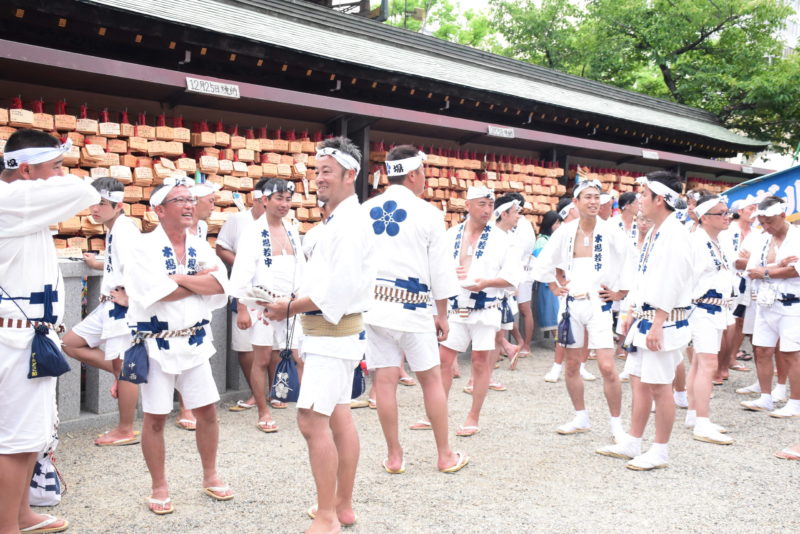
The trains will be very crowded, so if you are taking public transportation, plan ahead. If you don’t have a train pass, buy your return ticket early can save you a wait at the ticket machines.
Another good option is to stop in a local izakaya or bar until the crowd thins out. It will make fun memories and a great end to your night.
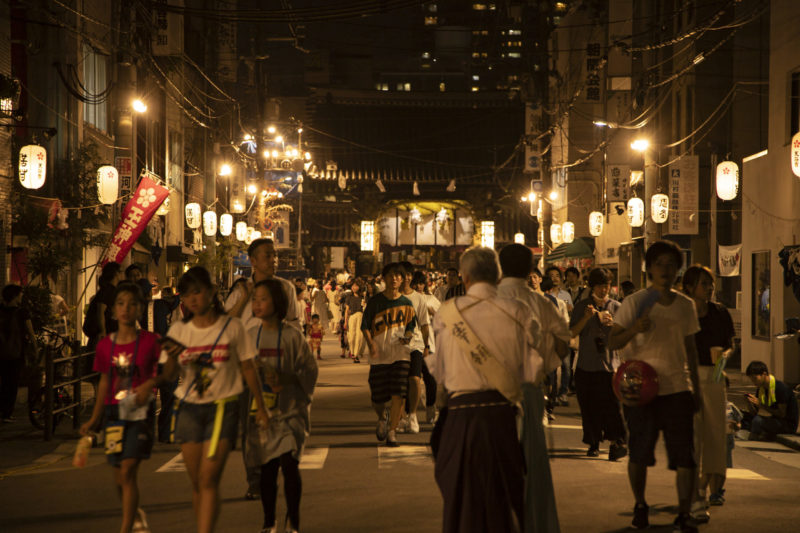

Supporter
The contents of this page were current at the time it was posted, but may differ from the present.
Text visible in this map is based on information from Map Tiler and may differ from actual geographical names.

